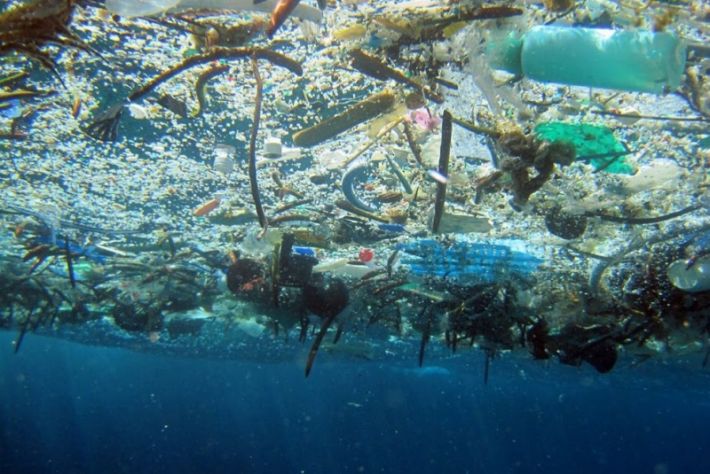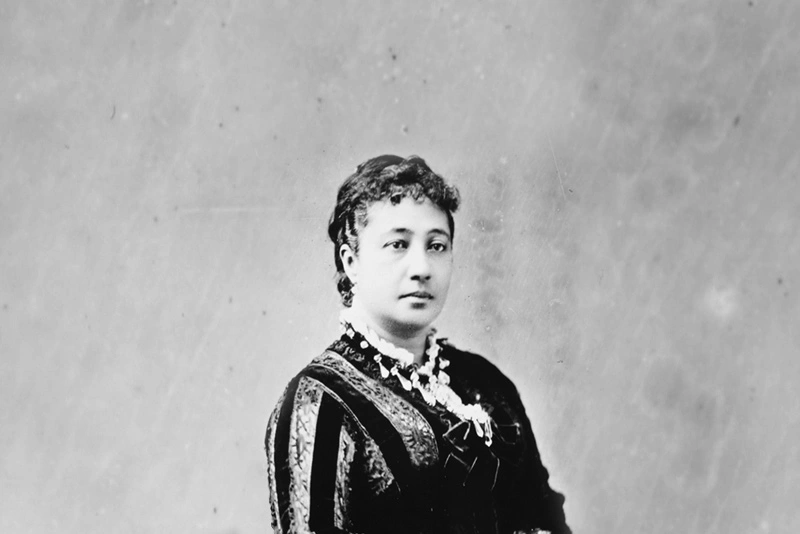In this Kūkahekahe column, we encourage you to join “Plastic Free July,” a global movement to reduce the use of plastics and encourage sustainability at home and in the workplace.
In 2018, the voyaging canoe Hikianalia sailed across the 2,800-mile sea road between Hawaiʻi and California referred to as Alahula Kai o Maleka with a message of Mālama Honua, caring for the earth. While sailing across the seemingly pristine blue waters of the North Pacific Ocean, Hikianalia came into contact with the Great Pacific Garbage Patch, a soup of microplastics and marine debris that is the largest accumulation of ocean plastic in the world. It is estimated to be more than 310 square miles large – or roughly twice the size of Texas!
During a recent trip to the beach, you and your ʻohana might have noticed that plastic waste – especially tiny plastic particles called microplastics – now litter Hawaiʻi’s shores. This phenomenon has grown exponentially within the past few decades.
Hawaiʻi’s position in the middle of the Pacific means that the same ocean currents and wind patterns that once brought our kūpuna “gifts from the gods” such as valuable whale ivory, or pine logs adrift from continental coasts, now bring toxic trash. While some plastics play important roles in our lives and can be recycled or reused easily, other plastics are made to be used only once. This category includes plastic utensils and plastic straws.
Hawaiʻi’s recycling facilities can process basic, everyday plastic products which are categorized. Unfortunately, all other plastics must be thrown away. In addition, some single-use items marked as compostable are not recyclable at Hawaiʻi facilities.
The plastic problem isn’t limited to Hawaiʻi; July has been designated as a “plastic-free month” in an effort to curb global plastic use, which has devastating effects on our oceans. This environmental movement started in Australia in 2011 and has since grown to include millions of people around the world.
E ka ʻohana Kamehameha, during Plastic-Free July and as the Polynesian Voyaging Society gears up for the next environmentally conscious voyage across the Pacific, we can do our part to ensure that our descendants never have to sail through a garbage patch.
The kuleana to mālama our waters is part of our culture, and part of our lifestyle here in Hawaiʻi. After all, we are island people of Moananuiākea, the vast Pacific Ocean! Together as individuals, we can collectively make a difference and help stem the flow of plastics into our ocean. We have some easy steps you and your ʻohana can take, even in the midst of the pandemic. Alternatives to plastic can be more economical in the long-run, and can save you and your ʻohana money!
TIPS FOR REDUCING PLASTIC USE
- A reusable water flask or cup are great alternatives to plastic bottles.
- Opt not to get single-use utensils, straws and bags when getting takeout food. Hawaiʻi’s recycling facilities can’t handle plastics even if they are marked compostable.
- Use alternatives to zip-top plastic bags and plastic cling wrap. Glass or aluminum containers work well and beeswax wraps or cloth bags are reusable.
- Switch to plastic-alternatives, like wooden toothbrushes, biodegradable dental floss and more. Buy refillable, bulk items like shampoo or soap to minimize the use of plastic bottles.
- We’ve suggested this in Kūkahekahe before! Wash your clothes in a special laundry bag meant to catch micro plastics, which will stop them from entering our water systems and eventually the ocean.
- Choose to use a washable/reusable fabric face mask instead of a disposable mask.
- Commit to picking up three or four pieces of trash a day, wherever you may be, and even if it’s not yours! According to some figures, 80% of plastic enters the ocean through rivers, streams, storm drains and water runoff so the less there is on land, the less there will be in the ocean.
- Make it a habit to have a trash pick-up kit in your car, especially when you go to the beach. Washable work gloves and a bucket are great ways to ensure you can pick up trash safely. Bonus points if you use a sand-sifter/colander, or other tool to help sift microplastics from the sands at our beaches!
Read more about Plastic-Free July here and access great classroom resources and general information about the Pacific Garbage Patch on the National Geographic website.

Plastic trash and debris floating in the ocean. Ki‘i courtesy of National Geographic.
TAGS
ho 'okahua,sustainability,mālama 'āin,moananuiākea,kūkahekahe,cultural conversations
CATEGORIES
Kaipuolono Article, Regions, Kaua’i and Ni’ihau, Themes, Culture, Community, Hawaii Newsroom, KS Hawaii Home, Kapalama Newsroom, Kapalama Home, Malama Ola Minute, Maui Newsroom, KS Maui Home, Newsroom, Campus Programs, Hawaii, Kapalama, Maui, Community Education
Print with photos
Print text only










